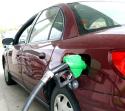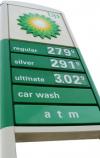 Nicole Jones
Nicole Jones Nicole Jones
Nicole JonesGas prices soaring above the three-dollar mark in the last month begs the question, “How can college students, especially commuters, afford to drive?” One way students can get where they need to go and still keep their wallets intact is to follow the guidelines below. These gas-preserving tips courtesy of msn.com and Consumer Reports can help you get more miles to the gallon and use less gas.
Proper Maintenance is Essential Keeping your vehicle in as best shape as possible allows it to operate at its best. Small things like fouled spark plugs or oxygen sensors, dirty air and fuel filters and incorrect tire pressure can hinder your vehicle’s performance. According to AutoZone, a new oxygen sensor can actually improve gas mileage by 15 percent! Also, tires that are inflated to the correct pressure recommended by the manufacturer can help fuel economy by 6 percent according to the U.S. Environmental Agency. The recommended pressures usually can be found on a sticker inside one of the door frames of the vehicle. Lighten Your Load Remember that purchase you forgot to return, those shoes that go with everything, that athletic equipment and everything and anything else you’ve been carting around with you in your car? Well, get rid of it because extra weight decreases gas mileage. Every 200 pounds of unnecessary weight takes one mile per gallon off your fuel mileage according to AutoZone.com. Don’t Be a Speed Demon Incorporating better driving skills like accelerating gradually and anticipating stops can result in a 20 percent gain in fuel economy, the EPA says. All those aggressive driving do nothing but suck gas and inflict wear and tear on your vehicle. Changing your speed frequently wastes fuel. The most fuel-efficient speeds are between 25 and 60 mph. Also, vehicles going 55 mph get 15 percent better fuel economy than vehicles moving just 10 miles faster.
Idle No More Another way to save fuel is to avoid idling too long. Sitting in drive-thru lanes is an unnecessary waste of gas; basically, your car’s getting zero miles to the gallon when it’s stationary and still running. Park and go inside to order. Drivers can also save fuel by avoiding the urban myth of allowing cars to “warm up” on cold mornings. Engines actually warm up faster while driving.
Be Organized When you leave the house or the dorm, be aware of all errands that need to be done, and plan accordingly. Try to get everything done in one trip, and avoid retracing your path. While shopping, park in a central location like a shopping center and walk to your destinations. Try to complete errands during less congested times of the day. Rather than driving during morning and evening rush hours, try late morning or late evening. Driving to Florence or Cincinnati during rush hour can only result in unnecessary idling and rough driving that wastes fuel.
Expensive Isn’t Always Better Some drivers have the mistaken belief that buying premium gas in lieu of regular will help their vehicles run more effectively. On the contrary, most cars are designed to run excellently on regular gasoline. Also, some more expensive vehicles that recommend premium gas run just as well on regular gas. Contact your dealership to find out if your engine can use either grade. If you try regular and can’t tell any difference, keep using it to save that much more on gas.
Seek Other Transportation Options Another way to save on gas and keep your vehicle in good condition is to seek different transportation options like taking public transportation, riding a bike or carpooling with friends or colleagues. For instance, if one of your classmates lives near you, then carpool. If you can find a group of your friends with similar schedules, then ride to school together, rotating drivers. These could cut the cost of driving to school by more than half of what you had been paying.

